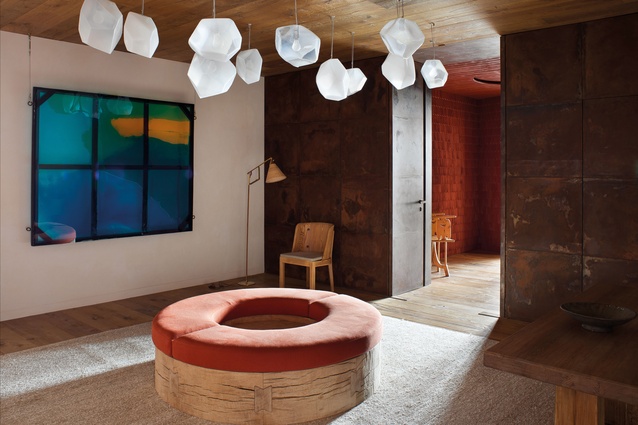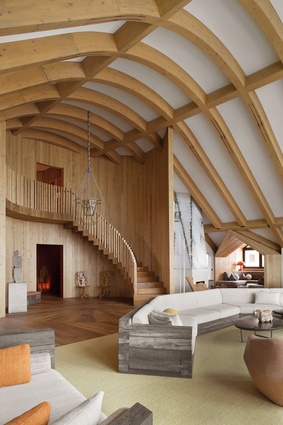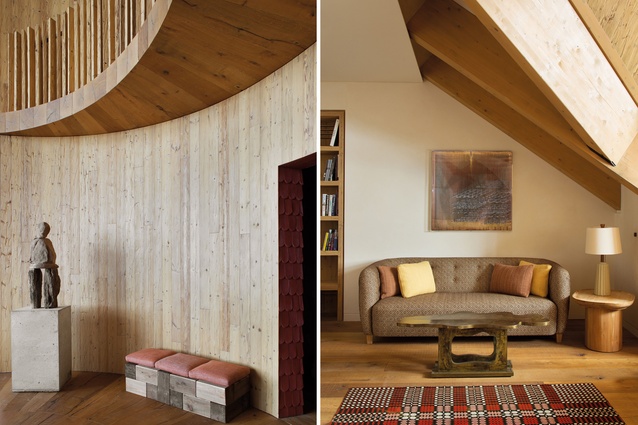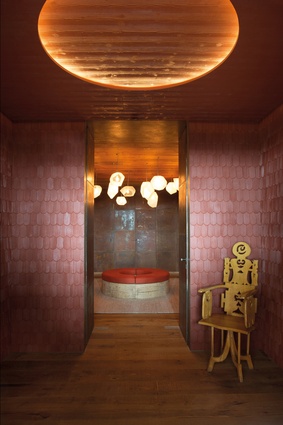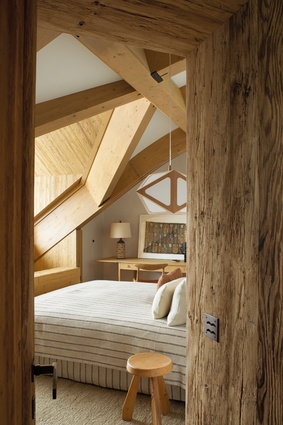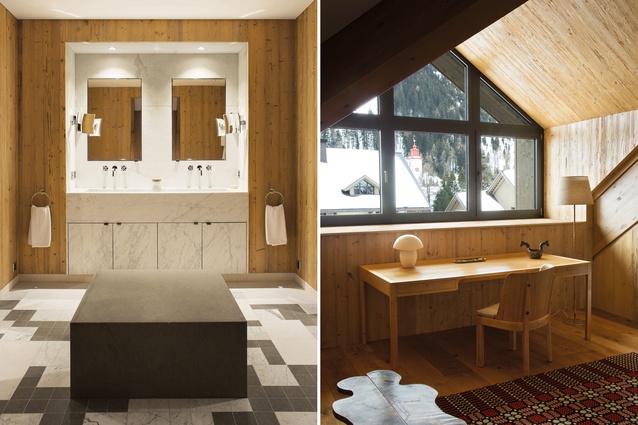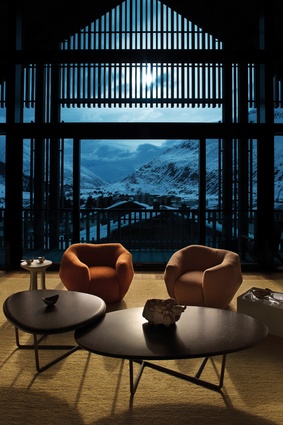Natural luxury: Swiss holiday home
Designed by Pierre Yovanovitch, this Swiss apartment embodies the luxury of natural materials and custom design.
Timber has long been used in the construction of houses but, in recent years, architects and designers have, increasingly, taken to using timber in more creative ways inside the home. Valued for its raw beauty, inherent variation, warmth and tactility, timber has come to represent luxury, no longer covered in a synthetic veneer.
Pierre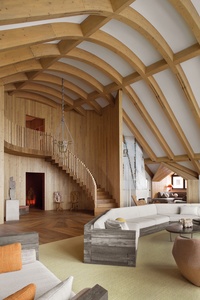
Timber provides a textured, organic backdrop in this penthouse, designed by . Located in Andermatt, Switzerland, the apartment is the holiday home of a family of four, which enjoys the all-season resort and wanted a space that was intimate for family but could also accommodate many guests.
Yovanovitch is known for his mastery of shaping space and sculptural volumes as well as his devotion to wood, and the solid oak floors, sweeping eight-metre-high ceiling and supple pine beams provided the perfect canvas. With imagination and skilfulness, Yovanovitch defined spaces using timber and furnished them with custom-made, vintage and contemporary pieces in an array of natural materials. Yovanovitch looked to local geographical and cultural references, drawing inspiration from Andermatt’s natural and built environments.
“I played with architectural codes of the region and amused myself disseminating subtle details evoking the chalet to create an atmosphere both authentic and contemporary, and of absolute comfort,” the designer explains. “I wanted the overall result to be similar to the surrounding mountain landscape: ruptures, changes and high peaks that demonstrate height and power against quieter, flatter expanses.”
Entry to the apartment is via two vestibules. The first, which has metal-clad walls with a weathered finish, references the entrance of a traditional chalet where people take off their coats, boots and gloves. Yovanovitch designed the circular seat positioned beneath Jeff Zimmerman’s faceted, hand-blown glass lighting installation, which evokes the ice outside.
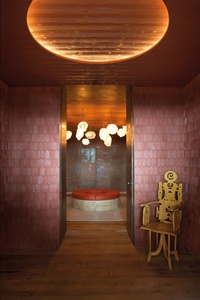
The walls of the second vestibule are cloaked with red wooden shingles recalling the roof tiles on traditional Andermatt houses. This smaller, darker room dramatises the experience of entering the light-filled, open living area.
A concave timber wall wraps around the back of the living area with a staircase that arcs around to the upper level, “like a curve that follows a mountainside,” Yovanovitch says. The timber-batten handrail is a nod to the simple wooden fences that ramble across the surrounding valleys. “As is often the case in my projects, the staircase is the backbone of the interior and it leaves a significant architectural imprint.”
Sitting under the voluminous ceiling, a large and sprawling setting on a custom mohair carpet faces a view of the village and valley through a 20-metre-wide window and balcony. Yovanovitch worked with French master carpenter Pierre Eloi Bris to design and craft the grey-tint larchwood daybed and sofa.
This room is divided into sub-spaces, “like small houses” as Yovanovitch describes, to create more-intimate areas for family and guests. The dining room and living room are positioned on opposite sides and within A-frame alcoves that recall the archetypal Swiss chalet. These spruce-timber enclosures are cosy and cocoon-like: one with an upholstered sofa snaking around the alcove and the other with a custom dining table and chairs.
Yovanovitch used stone, marble, ceramics, metal and glass in his contemporary reinterpretation of the predominantly timber-built and natural landscapes. Ceramicist Armelle Benoit’s brass-enamelled stoneware fireplace has a glacier-like form, while Studio Drift’s dandelion-seed chandelier glistens like snowflakes over the table. A blown-glass table by Nendo is inspired by molten glass, and a 1963 coffee table by Philip and Kelvin LaVerne is of patinated bronze.
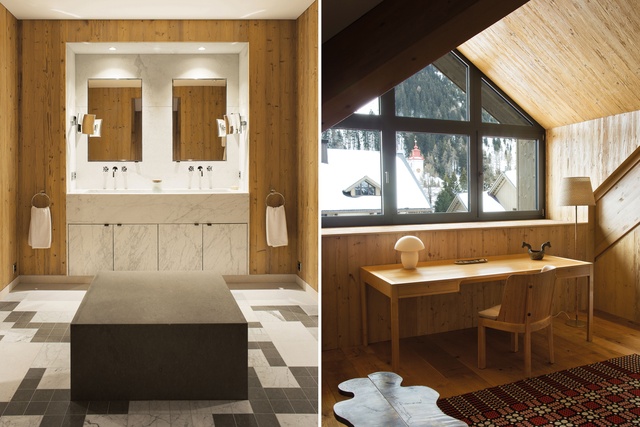
Other vintage furniture pieces include seating, tables and lighting by Scandinavian, European and American craftspeople and designers, such as John Dickinson, Roberto Matta, Charlotte Perriand, Paavo Tynell and Hans Wegner.
Upstairs, the master suite, the children’s bedrooms and two guest rooms are set within the apex of the ceiling. The pine-beam structure is exposed and spruce timber frames the pitched windows. Stone benches, Calacatta vanities and marble floors in the bathrooms are in shades of white and grey, evoking the snow-covered valley outside.
Built and furnished with timber, stone, ceramic and wool, this penthouse apartment embodies luxury: one that is achieved through the intrinsic imperfection of natural materials and the sculpted perfection of custom design.

